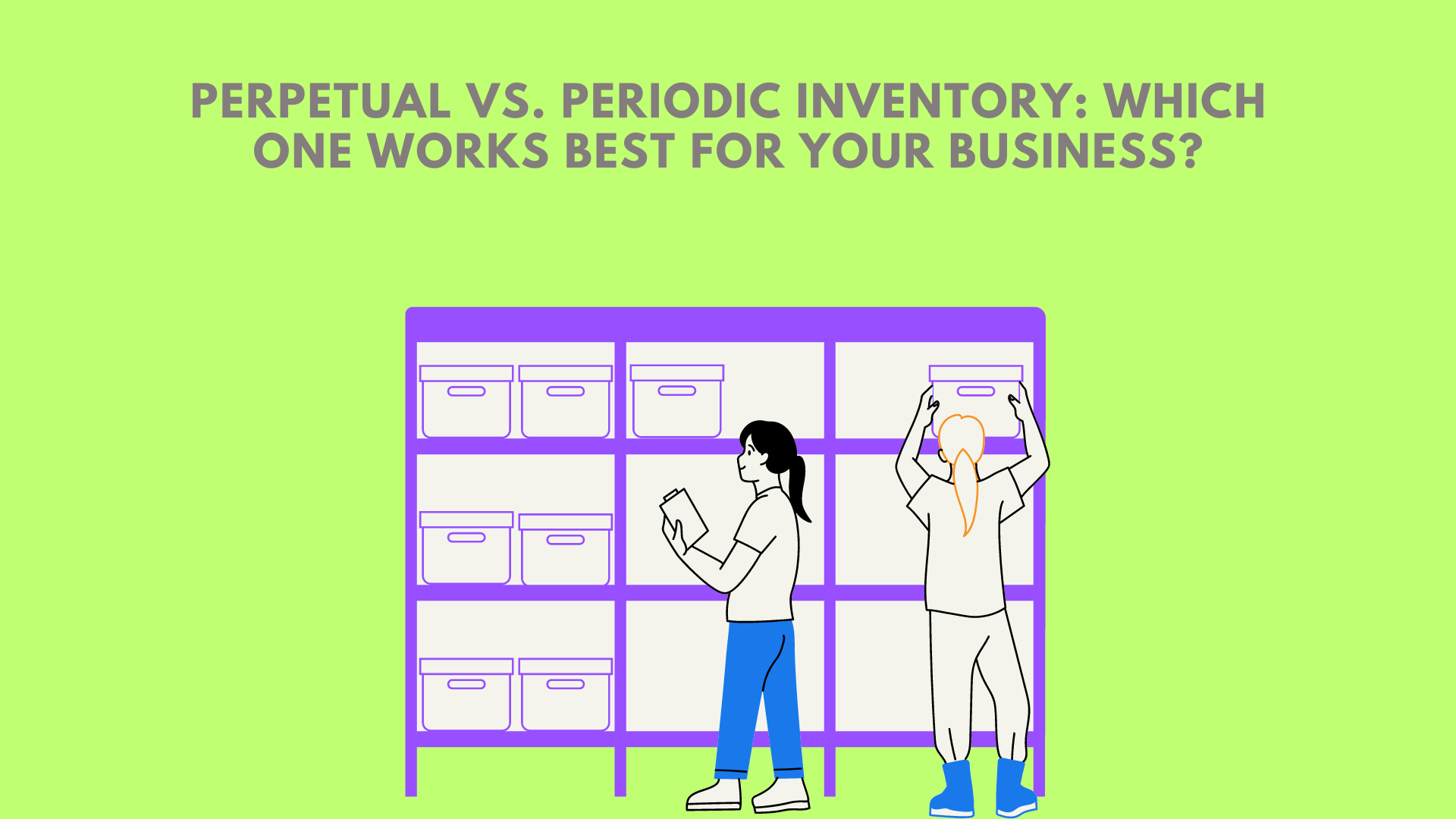Inventory management is a critical aspect of running a successful business. Whether you operate a small retail shop or a large manufacturing firm, keeping track of your inventory is essential for ensuring you meet customer demand without overstocking or understocking. Two primary methods for managing inventory are perpetual and periodic inventory systems. Understanding the differences between these systems and their respective advantages and disadvantages can help you decide which one is best for your business.
What is Perpetual Inventory?
A perpetual inventory system continuously tracks inventory levels in real-time. Every time an item is sold, returned, or received from a supplier, the inventory records are updated immediately. This method relies heavily on technology, including barcode scanners, RFID systems, and sophisticated inventory management software.
Advantages of Perpetual Inventory
Real-Time Accuracy: Provides up-to-date inventory levels, reducing the risk of stockouts and overstocking.
Improved Decision Making: With accurate data, businesses can make better purchasing, sales, and production decisions.
Reduced Manual Labor: Automation minimizes the need for manual inventory counts, saving time and reducing errors.
Enhanced Customer Service: Real-time tracking ensures that customers receive accurate information about product availability.
Disadvantages of Perpetual Inventory
High Initial Cost: Implementing a perpetual system requires investment in technology and software.
Complexity: The system can be complex to set up and requires ongoing maintenance and training.
Dependence on Technology: System failures or technical issues can disrupt inventory tracking.
What is Periodic Inventory?
A periodic inventory system, on the other hand, involves counting inventory at specific intervals, such as weekly, monthly, or annually. Inventory records are updated only after these physical counts, meaning that inventory levels are not tracked continuously.
Advantages of Periodic Inventory
Lower Initial Cost: Requires less investment in technology and can be managed with basic tools like spreadsheets.
Simplicity: Easier to implement and manage, especially for small businesses with limited inventory.
Flexibility: Businesses can choose the frequency of counts based on their needs and resources.
Disadvantages of Periodic Inventory
Inaccurate Data: Inventory levels are only accurate at the time of the physical count, leading to potential discrepancies.
Time-Consuming: Regular physical counts can be labor-intensive and disruptive to operations.
Delayed Decision Making: Lack of real-time data can result in delayed responses to inventory issues, affecting customer service and sales.
Choosing the Right System for Your Business
When deciding between perpetual and periodic inventory systems, consider the following factors:
- Business Size and Complexity
Small Businesses: A periodic system may be sufficient if you have a small inventory and can manage physical counts without significant disruption.
Large Businesses: Larger businesses with extensive inventory and high transaction volumes will benefit from the real-time accuracy of a perpetual system. - Budget and Resources
Limited Budget: If your business has budget constraints, a periodic system can be a cost-effective solution.
Willingness to Invest: Businesses willing to invest in technology for long-term benefits should consider a perpetual system. - Inventory Turnover Rate
High Turnover: Businesses with high inventory turnover, such as retail stores, will benefit from the continuous tracking of a perpetual system.
Low Turnover: Businesses with low turnover rates may find periodic inventory management more manageable and cost-effective. - Technological Capabilities
Tech-Savvy Business: If your business is comfortable with technology and has the infrastructure to support it, a perpetual system is advantageous.
Tech-Limited Business: Businesses with limited technological capabilities may find periodic inventory simpler to implement. - Regulatory and Reporting Requirements
Strict Requirements: Industries with strict regulatory and reporting requirements may need the detailed and accurate data provided by a perpetual system.
Flexible Requirements: Businesses with more flexible reporting requirements may opt for a periodic system to reduce costs.
Conclusion
Choosing between perpetual and periodic inventory systems depends on your business’s specific needs, resources, and operational complexity. While perpetual inventory offers real-time accuracy and improved decision-making, it requires a higher initial investment and technological infrastructure. Periodic inventory, on the other hand, is simpler and more cost-effective but may not provide the same level of accuracy and efficiency.
Evaluate your business size, budget, inventory turnover rate, technological capabilities, and regulatory requirements to determine which inventory management system is best suited for your operations. By selecting the right system, you can enhance your inventory management processes, improve customer satisfaction, and drive overall business success.









